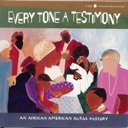Work Song, Field/Street Call, Satirical & Protest Songs
Picking Cotton, US South, 1873-1874
Ernst von Hesse-Wartegg [Travels on the lower Mississippi, 1879-1880] (Leipzig, 1881)Key Attributes of Work Song, Field/Street Call, Satirical & Protest Songs
Select to filter timelineThemes
- Slavery
- Love/Relationships
- Oral Traditions
- Freedom
Musical Features
- Call and Response
- Phrasing
- Vocals
- Improvisation
- Vocal Sounds
- Repetition
Instruments
- Voice
“Slaves are generally expected to sing as well as work. A silent slave is not liked by masters or overseers.”Frederick Douglass
Since the earliest days of slavery, singing has accompanied all kinds of group and individual work activities of African Americans. These improvised songs, known as work songs, field calls (also field hollers) and street calls (also street cries) served many functions. Singing passed the time, coordinated the movements of workers and offered encouragement. They also communicated human emotions and provided a forum for criticizing whites in positions of authority.
Context and History
“When rowing in canoes...[the rowers] generally sing the whole time, and one of the passengers accompanies the song with a small drum. One of the rowers sings a couplet, somewhat in a recitative voice, which is closed by a chorus in which they all join.”Thomas WinterbottomPhysician working in Sierra Leone, West Africa, from 1792 to 1796
“The [dozen stout rowers] negroes struck up a song to which they kept time with their oars; and our speed increased as they went on...The words were rude enough, the music better, and both were well-adapted to the scene. A line was sung by a leader, then all joined in a short chorus; then came another solo line, and another short chorus.”Passenger on a boat traveling the Johns River in Florida in 1835
As Africans in America, the enslaved retained many customs of the past, which remained relevant after the abolition of slavery. While working long hours in the cotton and tobacco fields or clearing brush, husking and grinding corn, cutting wood, rowing boats, and laying railroad tracks, and as stevedores and fishermen, they sang work songs to pass the time, relieve boredom, and coordinate the movements of repetitive manual labor. Many work crews had song leaders who improvised a line, to which the others responded with a refrain. This singing style is heard in “Lost John” by a prison farm work group. Other work songs consisted only of repeated choruses.
Even though work songs commonly are associated with groups, individuals, who worked alone in the field or at a distance from others, used song as a personal form of communication. Their improvised utterances, known as field calls/field hollers, conveyed human needs (i.e. calling for water and food) as well as expressed human emotions of fatigue and loneliness. The latter is heard in the wordless song “Arwhoolie.” Crew leaders also used calls to give work instructions, as did Henry Truvillion in “Rails Unloading.” Street vendors in towns and cities used street calls (also known as street cries) to describe and sell products, such as watermelons, peaches, apples, ice cream, etc. Individuals also sang while performing other common work activities such as weaving, cooking, cleaning, and shining shoes.
Work songs/field calls became a forum for satirical commentary and protest. As both slaves and free people, African Americans poked fun at whites and frequently expressed their displeasure of poor working conditions, the unreasonable expectations of overseers/employers and inhumane treatment from those in authority as communicated by Rich Amerson in “Railroad, 2” and heard in “Complaint Call.”
Musical Features/Performance Style
Work songs are improvised using call-and-response structures, repetitive refrain lines, or choruses. They are sung in heterophony with melodic and timbral variation. Field and street calls are also improvised but vary in structure according to a freely personalized style. Some contain a few words or short phrases, but others consist of non-verbal utterances such as moans and hollers. An observer describes such singing:
“Suddenly one [an enslaved] raised such a sound as I had never heard before, a long, loud musical shout, raising and falling, and breaking into falsetto, his voice ringing through the woods…”A traveler in South Carolina
Lyrics
The texts of work songs describe the labor being done (e.g., beating rice, corn shucking, rowing, woodcutting, and railroad songs, etc.) and recount the personal experiences of workers:
I Gwine To Beat Dis Rice
I gwine to beat dis rice
Gwine to beat um so
Gwine to beat um until the husks come off
Ah hanh hanh, Ah hanh hanh.
Gwine to cook dis rice when I get through
Gwine to cook um so
Ah hanh hanh, Ah hanh hanh.
Gwine to eat my belly full
Ah hanh hanh, Ah hanh hanh.
(Parrish, Slave Songs 1992: 236)
Woodcutting Song (explicit)
A cold frosty morning,
The niggers feeling good,
Take your axe upon your shoulder,
Nigger, talk to the wood.
Satirical and Protest Songs
These songs drew from biblical themes, relationships, and folk tales, especially those about slaves who outwitted their masters by running away and freedmen who defied authority. Some songs criticized whites, and their imposed oppressive life as enslaved and free people.
Long John
It’s a long John, It’s a long John,
He’s a long gone, he’s a long gone,
Like a turkey through the corn, through the long corn,
Well, my John said, in the ten chap ten,
If a man die, he will live again,
Well, they crucified Jesus and they nailed him to the cross,
Sister Mary cried, my child is lost.
Old Daniel
You call yourself church member,
You hold your head so high,
You praise God with your glittering tongue,
But you leave all your heart behind.
No Title
She sift de meal, she gimme de dust,
She bake de bread, she gimme de crust,
She eat the meat, she gimmie the skin,
An’ dat’s de way she tuck me in.
No More Auction Block for Me
No more auction block for me, no more; no more;
No more auction block for me, many thousands gone,
No more peck o’ corn for me, no more, no more;
No more peck o’ corn for me, many thousands gone,
No more driver’s lash for me, etc. (2X)
No more pint o’ salt for me, etc. (2X)
No more hundred lash for me, etc. (2X)
No more mistress call for me, etc. (2X)
Field calls convey emotions and communicate specific personal needs; street calls describe the product being sold.
Bibliography
- Levine, Lawrence. Black Culture and Black Consciousness: Afro-American Folk Thought from Slavery to Freedom. New York: Oxford Press, 1977.
- Burnim, Mellonee V. and Portia K. Maultsby, eds. African American Music: An Introduction, 2nd. Ed. New York: Routledge Press, 2015.
- Courlander, Harold. Negro Folk Music: U.S.A. New York: Columbia Press, 1963. Jackson, Bruce, Ed. The Negro and his Folklore in 19th Century Periodicals. American Folklore Society and University of Texas Press, 1967.
- Epstein, Dena. Sinful Tunes and Spirituals: Black Folk Music to the Civil War, Urbana: University of Illinois Press, 2003 reprint [1977].








